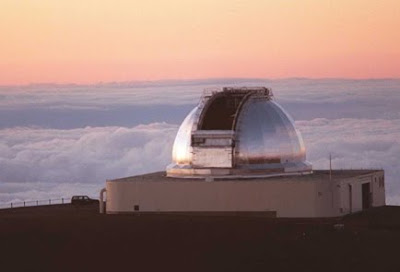
NASA astronomers have successfully demonstrated that a David of a telescope can tackle Goliath-size questions in the quest to study Earth-like planets around other stars. Their work, reported today in the journal Nature, provides a new tool for ground-based observatories, promising to accelerate by years the search for prebiotic, or life-related, molecules on planets orbiting stars beyond our solar system.
The scientists reported on a new technique used with a relatively small Earth-based telescope to identify an organic molecule in the atmosphere of a Jupiter-size planet nearly 63 light-years away. The measurement revealed details of the exoplanet's atmospheric composition and conditions, an unprecedented achievement from an Earth-based observatory.
The surprising new finding comes from a venerable 30-year-old, 3-meter-diameter (10-foot) telescope that ranks 40th among ground-based telescopes - NASA's Infrared Telescope Facility atop Mauna Kea, Hawaii.
The new technique promises to further speed the work of studying planet atmospheres by enabling studies from the ground that were previously possible only through a few very high-performance space telescopes. "Given favorable observing conditions, this work suggests we may be able to detect organic molecules in the atmospheres of terrestrial planets with existing instruments," said lead author Mark Swain, an astronomer at NASA's Jet Propulsion Laboratory, Pasadena, Calif. This can allow fast and economical advances in focused studies of exoplanet atmospheres, accelerating our understanding of the growing stable of exoplanets.
"The fact that we have used a relatively small, ground-based telescope is exciting because it implies that the largest telescopes on the ground, using this technique, may be able to characterize terrestrial exoplanet targets," Swain said.
Currently, more than 400 exoplanets are known. Most are gaseous like Jupiter, but some "super-Earths" are thought to be large terrestrial, or rocky, worlds. A true Earth-like planet, with the same size as our planet and distance from its star, has yet to be discovered. NASA's Kepler mission is searching from space now, and is expected to find several of these earthly worlds by the end of its three-and-a-half-year prime mission.
Patio misting systems | Misting cooling system | Mist cooling | Outdoor cooling systems | Patio cooling systems | Misting fan






0 comments:
Post a Comment